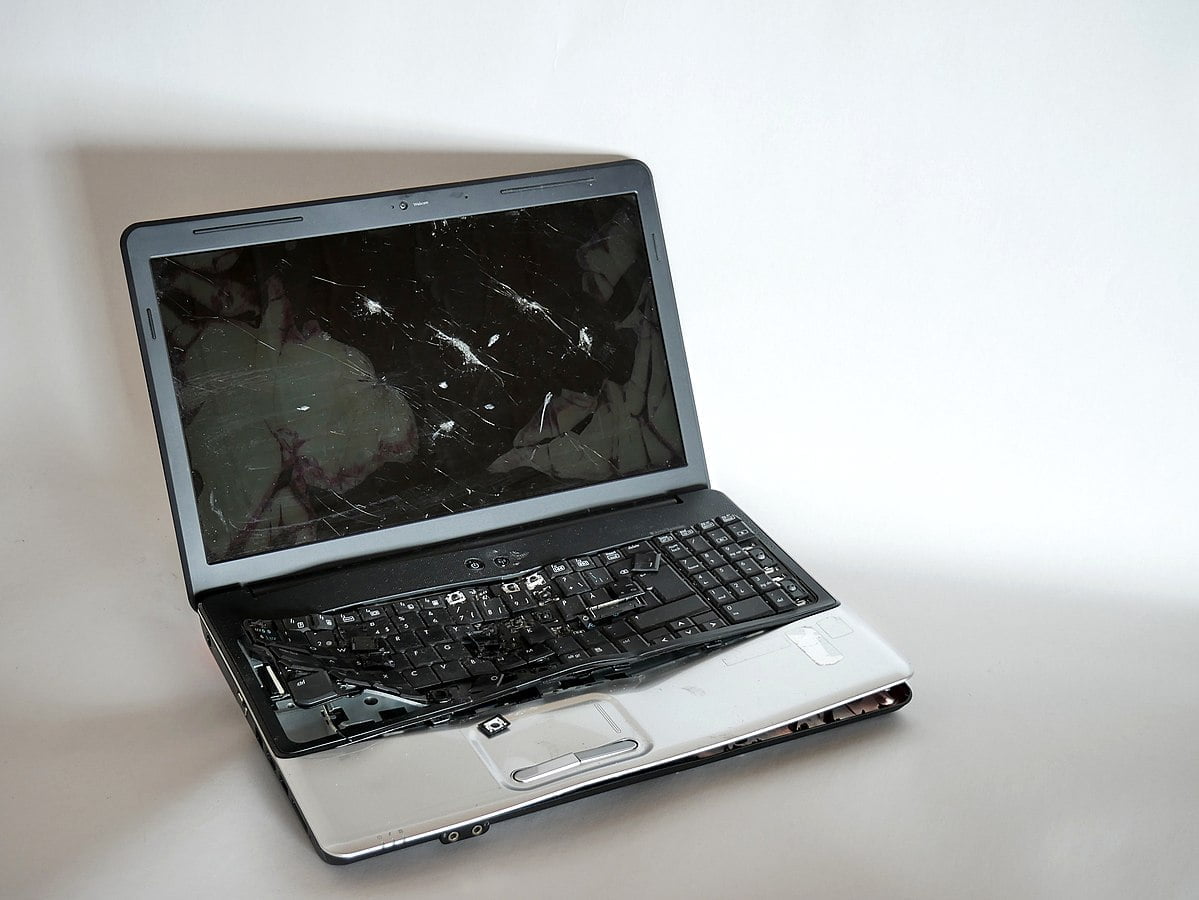The right business laptop can make you work faster, feel happier and possibly even become a better person. If your work laptop is turning you into “that colleague” and it’s time for a new one, read our checklist to help you make the right choice for future working bliss.
It’s not all about “My hard drive’s bigger than your hard drive.” We will also talk about other important things you should consider, like how many plug holes you need, and whether your new webcam is flattering.
Business laptop features checklist
What are all the things you will you need to plug into your business laptop?
Some laptops have a lot more ports than others. Make a list of every peripheral you will need to plug into your business laptop, then add all the extras you may sometimes want to connect to it while you’re out and about.
Remember that some peripherals can connect using more than one type of port.
• A full size HDMI port will allow you to connect to a TV or a projector.
• An SD or microSD card slot lets you expand your laptop’s storage without an external hard drive. It’s also the easiest way to upload pictures from a DSLR camera.
• You will probably need more than one USB Type-A port (the traditional type of USB) to plug in dongles for a full-size keyboard and mouse and possibly a headset.
• Monitors can be connected by HDMI, but they can also be connected by USB-C cables which can recharge the battery as well. (You will need to check for compatibility though, as not all devices are compatible for USB-C charging.)

“Have you tried turning it off and then on again?”
How fast do you want your business laptop to be?
This isn’t even really a question. There’s not much we hate more than a slow computer. It’s the number one reason people give for buying a new laptop or PC.
Get 8GB of RAM as your absolute minimum. Anything less than 8GB RAM will make your laptop too slow. Get more if you can afford it.
Bear in mind that certain applications, such as Microsoft Teams, will make heavy demands on available RAM. If you are a heavy user of demanding apps, it’s worth the extra cost of more RAM.
How big do you need your screen to be?
If you opt for the biggest screen possible, you may regret that when you realise you need to buy a bigger backpack to lug it around in and then start suffering from an aching shoulder. On the other hand, if you use your laptop a lot without an additional monitor, you will find a screen that’s too small seriously impedes your ability to work.
Most people find 14” screens adequate but, before ordering a new laptop, check the size of your old one for comparison. Since screens are measured diagonally, it’s hard to imagine a different size without measuring. You could also get out a ruler and use pieces of paper to compare how much bigger or smaller a different size would be.
Will you want to upgrade your business laptop with more memory in the future?
Check if your laptop has soldered RAM. Soldered RAM can’t be removed from the motherboard. The upside is that it makes the laptop lighter and flatter, but the downside is that you can’t upgrade your laptop to give it more memory.
In the not too distant future, 16GB of RAM will become standard. Some business laptops have one soldered RAM module and a free slot, which means you could add a second stick of RAM. It would be better to replace the RAM altogether but this could be a suitable compromise.
Do you want higher screen resolution or a longer battery life?
We all love the sharp images that higher resolution displays give us. It also means we can read smaller text easily. The downside is that, the higher your resolution, the sooner your laptop battery will go flat.
• Avoid 720p displays. They just aren’t good enough these days and text will look too pixelated.
• 1080p is generally better than 4K for a business laptop.
• If you need to edit videos or pictures frequently, this will not be enough and you will require a higher resolution.
Do you want a lighter business laptop or a longer battery life?
You want your laptop battery to last as long as possible between charges, right? The problem is that batteries are heavy. If you carry your laptop around a lot, you may decide to work out how much battery life you really need so you don’t weigh yourself down more than you need to.
Some business laptops have batteries you can easily change for yourself. This means you can take a spare with you if you will be using your laptop intensively without being able to recharge.
This handy feature could also save you money in the long run, if you often use your business laptop on battery power alone. If you find it doesn’t hold a charge like it used to, you can buy a new battery instead or replacing the whole laptop.
How will you charge your business laptop battery?
You can charge most laptops using a standard charging cable. You can charge newer ones through a USB-C cable via a dock or some types of monitor with an integrated dock, which results in fewer trailing wires.
Some business laptops on the market still use their own proprietary connectors. The idea is that no-brand standard cables may not have the right resistors to protect your device from power surges: forcing you to use the manufacturers own cable is a way to protect your device.
Generally, not being able to borrow cables in a jam can be highly inconvenient.
• The Microsoft Surface Laptop 4 uses the company’s proprietary Surface connector.
• If you look for a reconditioned gaming laptop for business (and when it comes to value for money this could be a great idea), remember to check what type of charger it uses. Some gaming laptops use proprietary chargers which can draw a higher voltage than standard chargers.
Do you want lots of memory, or more speed?
Laptops can either have a hard disk drive (HDD) also known as a mechanical hard drive, or a solid state drive (SSD). This is the boot disk where the operating system is installed.
• HDDs are slower, but you get more storage space and they’re cheaper.
• SSDs boot up much faster and generally operate faster, and they are lighter, more durable, and they use less energy. The downside it you tend to get less memory.
If you opt for SSD – which we think is better – choose at least 128GB so you have enough room for the operating system, your frequently used programs and your most important files that you access regularly. The rest of your data can be stored in the cloud.
How much will you use the webcam for virtual business meetings?
Virtual meetings are not going out of fashion any time soon, so a good built-in webcam is a must for a business laptop. Windows Hello even lets you log into your laptop using facial recognition if you’re running Windows 10 or 11, which isn’t really necessary but it’s still fun.
We’ve all heard of spyware that lets cyber criminals watch you when you think the camera is off, and we’re sorry to tell you this really can happen. What happens more often is people letting colleagues see terribly embarrassing scenes in their homes because of blunders with webcam settings. A webcam shutter is like a physical lens cap that covers the camera and will never flutter away like a torn-off piece of post-it note. If you like to work from home wearing your pyjamas or less, this could be an essential feature of your next business laptop.
But, how can I look good through a webcam?
Yes, we did promise advice on whether your new webcam would be flattering. This isn’t just about vanity. If you hold business meetings or interviews remotely, you should try to avoid looking like a ninja assassin in the dark or like a washed-out vampire who may not be well enough to do the job.
We’re sorry to say that if the webcam is built into your laptop, it’s not going to have the newest technology in autofocus, full HD video or light correction. But we do have some tips that are easy to follow.
- Rest your laptop on a box or pile of books so the base of the screen is level with your chin. Then angle the screen to get your face in the centre. This high perspective will make you look younger and slimmer and, most importantly, make sure nobody can see up your nose.
- Put the two strongest lights you can find each side of your screen so they are shining onto your face. Failing this, face towards a bright window. The aim is to have no shadows cast across your face. If you’re worried about blemishes or wrinkles, oddly enough this is the best way to hide them.
- Blurred or digital backgrounds tend to make you look as if your hair is gently smouldering, which can be somewhat distracting. Instead, try to sit in front of a bookcase or a plain wall. Or the kitchen cupboards. Basically, anywhere that’s not the bedroom.


